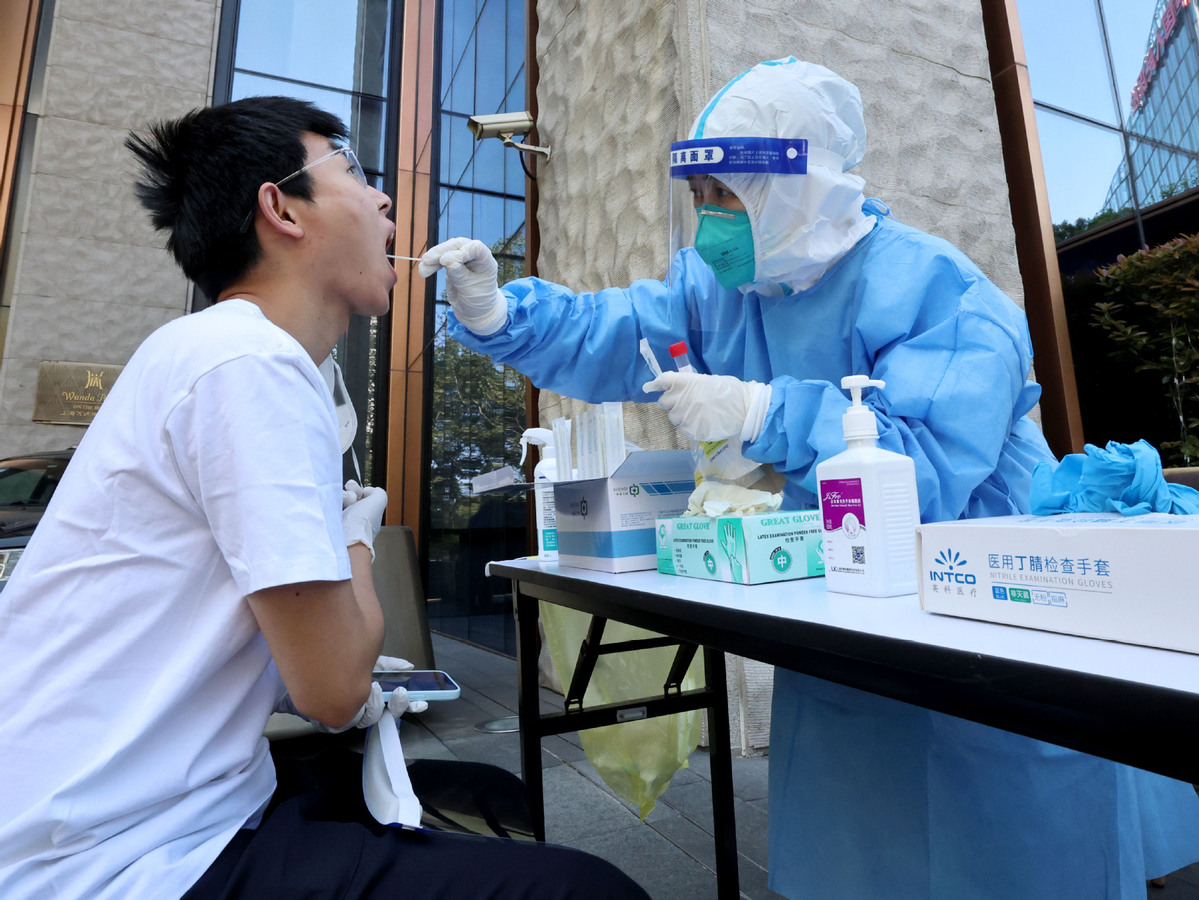Virus highly infectious, but unlike flu
 0 Comment(s)
0 Comment(s) Print
Print E-mail China Daily, April 11, 2022
E-mail China Daily, April 11, 2022

The Omicron strain of the COVID-19 virus should not be treated like influenza because it can quickly run rampant with its high transmissibility and stealthy transmission, posing particularly severe risks to the elderly, a senior expert said on Sunday.
As the novel coronavirus will likely acquire more dangerous mutations in the future, adhering to the dynamic zero-COVID strategy remains the best option for China, including for Shanghai, which has reached an acute phase of the fight against the disease, said Liang Wannian, a member of an expert panel sent to Shanghai by the State Council's Joint Prevention and Control Mechanism.
"The recent round of outbreaks driven by the Omicron variant should not be handled as a flu epidemic," Liang said during an interview. "It spreads faster and in a more covert way than the flu virus, increasing the danger of causing a large-scale transmission."
The overall fatality rate of Omicron is higher than that of seasonal flu, he said. Among people age 80 and older, its mortality rate jumps to 10 times higher than that of the flu.
"Another key feature of the virus is that it is constantly evolving, and we are unsure what future mutations might be like," he said. "If the virus mutates into a more harmful form, it will pose greater risks to our health."
Zhang Wenhong, head of the infectious disease department at Fudan University's Huashan Hospital in Shanghai, also called for more attention to be given to protecting the most vulnerable groups during the epidemic.
"We medical experts have devoted great efforts to monitoring and caring for elderly people who have not been vaccinated and have underlying illnesses," he said in an article published by People's Daily on Saturday.
Global data has shown that elderly people who have not been vaccinated are the group most vulnerable to COVID-19, he said. "I've emphasized that Omicron is not a powerful flu, and it strikes, strikes particularly hard the elderly who are not protected by vaccines," he said.
Zhang said the pressing task now is to contain the epidemic in Shanghai and cut off transmission in communities so normal life and production can resume.
"Achieving dynamic clearance will also help restore normal medical services and allow other patients, especially those in severe condition, to access adequate care," he said.
Shanghai still faces a grim struggle in fighting the virus. The latest National Health Commission data showed that daily infections keep rising in the city. On Saturday, 1,006 confirmed, locally transmitted infections and nearly 24,000 asymptomatic infections were registered.
Zhang said the rapid spread of Omicron has also highlighted the urgency to step up preparedness for future potential outbreaks, such as ramping up booster vaccinations among the elderly, increasing supplies of drugs and accelerating construction of quarantine facilities.
Faster action
Zhong Nanshan, a prominent respiratory expert and an academician in the Chinese Academy of Engineering, said in a lecture on Friday that some countries have decided to coexist with the virus due to Omicron's relatively milder symptoms and lower fatality rate, but the strain can lead to many deaths if anti-virus restrictions are entirely lifted in China.
"Completely opening up does not fit China's situation," he said. "In China, we should stick to the dynamic zero-COVID strategy and ease policies gradually in the future."
On Sunday, Liang also stressed that for now the full implementation of the dynamic zero-COVID strategy will still bring the best outcomes at the lowest cost.
He made clear that at the center of the dynamic zero-COVID strategy is rapidly detecting new infections and blocking the virus' transmission to prevent its continued spread in communities.
The approach does not try to prevent new cases from occurring at all or maintain zero tolerance for new outbreaks, he said. "We're unable to ensure that no infections occur because the virus can spread stealthily. But we must swiftly detect and handle new clusters."
To get past the peak of the outbreak in Shanghai will require all-out efforts, such as multiple rounds of mass screening and lockdowns, to cut the virus' spread across the population, Liang said.
"The Omicron strain spreads so quickly that we must roll out measures at an even faster pace than our fight against previous mutations such as Delta and Alpha," he said.
In addition, the high infectiousness of Omicron means that letting a few cases slip away could soon result in exponential rises and larger clusters.
So far, Shanghai has managed to avert the kind of exponential increase that the Omicron strain is capable of triggering with its ferocious speed of transmission, suggesting that the current measures are playing an important role in containing the epidemic, according to Liang.
However, "the fight in Shanghai is at its most acute and tense phase, and we must keep pressing on", he said.






Go to Forum >>0 Comment(s)